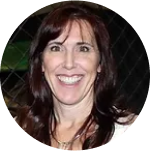About Us

Our Ideal Client…
Our clients have great products and services yet struggle to know where to best allocate their time, energy, and resources to get to their next level. They sometimes feel like they are treading water and lack clarity on how to best move forward.
They want to win and have the right pieces of the puzzle. However, they have a tricky time knowing what the puzzle looks like when completed. With a curated and personalized roadmap, expert facilitation, and a tech-enabled platform to hold it all together, we ensure a holistic and sustainable path to Greatness.
We love the work – love the impact – and thrive on the more complex and challenging scenarios.
Does this sound like your organization? Reach out to share your most pressing issues, and let’s get your journey started!

Many of today’s businesses place excessive emphasis on trying to emulate the success of another business.
Books, webinars, and many conferences center attention on recounting the actions of a successful business, leaving folks thinking that if they just do what the successful company did, they’ll get the same results. This is not how it works.
To get the best results suited for your business, you have to delve into the driving forces that underpin achievement in the first place. Your company already possesses the essential components required to cultivate a lasting competitive edge. What may be missing is the structure and discipline to put the pieces together in a way that delivers the results you are looking for.
Cyndi formulated the “Four Pillars of Organizational Greatness” to serve as a simple framework to uncover your organization’s undercurrent and how it impacts your capacity to grow and create value in the world.
The relationship between the pillars creates a resiliency that support growth at all stages of the business life cycle.
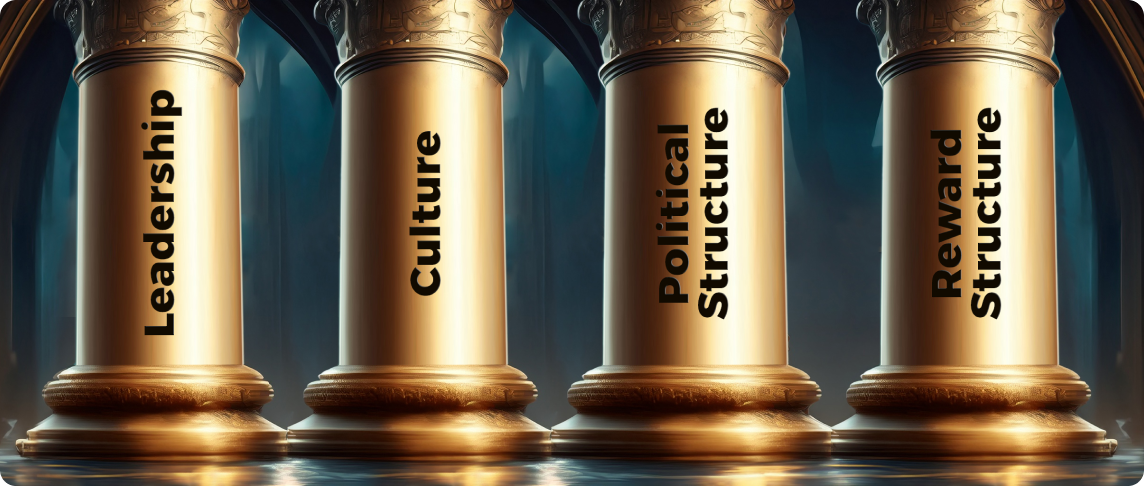
When the pillars are aligned, it will ignite your path towards GREATNESS. While most companies work to optimize the individual parts of their organization, the most successful ones optimize the relationships between the parts.
To create an engaging and innovative culture, it requires thinking and acting in ways you haven’t in the past. It’s not that people naturally resist change. They just need to see the value, or immediate benefit, to the change. Once the value proposition is clear, they will become a force to be reckoned with.
RESOURCES
Innovative Books for a
Competitive Advantage
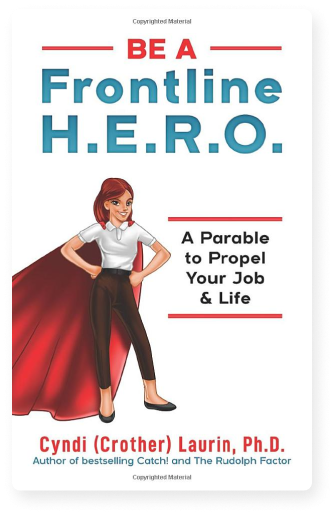
Be a Frontline H.E.R.O.
Your Job & Life
Be a Frontline H.E.R.O.
A Parable to Propel Your Job & Life
Recognized as one of Amazon.com’s #1 New Releases in Business Leadership Training, this book has already made a significant impact, empowering numerous managers to propel their teams to new heights.
With its concise and accessible format, “Be a Frontline H.E.R.O.” is a quick and enriching read, packed with five practical tools that can be applied immediately. Get your copy today and embark on a journey towards becoming a H.E.R.O in your organization! Your team and your career will thank you.
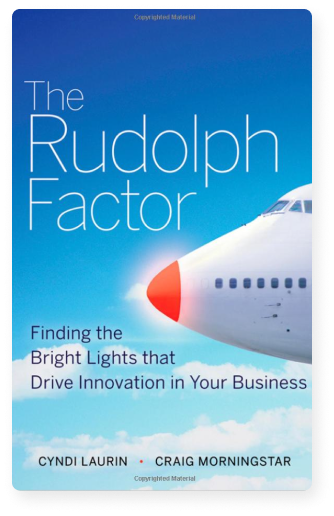
The Rudolph Factor
The Rudolph Factor
Finding the Bright Lights that Drive Innovation in Your Business
Step into the heart of organizational excellence with “The Rudolph Factor.” Go behind the scenes of THE BOEING COMPANY’s acclaimed C-17 PROGRAM – honored twice with the prestigious Baldrige Award.
Released in 2009, this captivating narrative delves into the blueprint for achieving extraordinary success, a top pick that Businessweek.com deemed one of the “20 Great Summer Reads.” Discover how people-powered transformations can propel your organization to new heights.

Catch! A Fishmonger’s Guide to Greatness
Catch! A Fishmonger’s Guide to Greatness
Stop Floundering and Become More Effective in Your Life and Work
Embark on a journey with “Catch!” – a groundbreaking book that offers an in-depth look at the inner workings at the world-renowned, PIKE PLACE FISH MARKET.
If you’re eager to create a work environment that fosters enthusiasm, innovation, and unmatched customer satisfaction, “Catch!” is your key to success. Join the ranks of tens of thousands of readers who have already experienced its transformative power.
What’s a Rudolph,
you ask?
Do you have a penchant for thinking “outside the box.” If so, you may have found yourself labeled as a change agent, intrapreneur…or trouble maker. Paradoxically, despite many business leaders looking for disruptive and innovative thinking, your approach may have met with less than open arms.
This phenomenon has always bewildered me, particularly since I have personally encountered ostracism for exactly the innovative and disruptive thinking and solutions that companies hired me to provide.
One day, it struck me that my experiences bore a striking resemblance to Rudolph, the red-nosed reindeer. Rudolph’s challenges to fit in, yet eventual triumph, mirror those of today’s unconventional thinkers, including myself.
In essence, we are armed with unconventional perspectives and wisdom about business. At times, we may be cast as outsiders, but we learn to strategically leverage our talents to quickly resolve some of the most complex and pressing challenges at hand.
Wondering if you might be a Rudolph? Click here for a brief assessment that will highlight what makes you tick.


Embracing Rudolphs Within Your Business: Unlocking Your Secret Weapon
If this does not sound like you, you may not be aware that some of your most creative and passionate contributors are actually your secret weapon. While everyone has innovative thinking in some capacity, a small fraction of us channel our super powers into the realm of solving complex business problems rather quickly.
Comprising roughly 10 percent of any given organization, Rudolphs’ talents remain vastly untapped, primarily due to political dynamics or uninspiring reward structures.
It’s not a surprise if you are not able to identify any Rudolphs among your team members. For our own sanity and sanctity, we learn to navigate beneath the radar. We are systems thinkers who connect the dots that others may not see. We can are highly engaged with our work, and under the right conditions, our reward is simply creating meaningful impact.
There is no glory in being a Rudolph. Our inquisitive minds can be a double-edged sword. Our relentless questioning of why things are done a certain way can appear like we are challenging deeply-rooted traditions. Consequently, we may be perceived as threats or sources of disruption.
As a result, many of us will embark on colorful career paths in search of a place where our penchant for solving problems and our unyielding pursuit of creating positive impact are not only leveraged but celebrated.
Leveraging Your Team for
Organizational Greatness
In every business, there exist team members with qualities akin to Rudolph’s, possessing unique attributes that could be harnessed for the benefit of the company and its customers. However, there is a notable absence or structured approach for recognizing and capitalizing on this talent.
Use this QR Code to take the first step in leveraging the talent you already have.
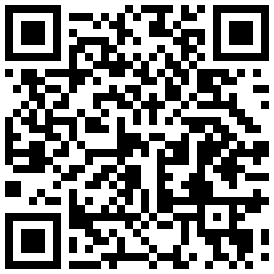
Unlock the latent potential within your organization. Let our team help instill systems and processes to realize your team’s most innovative ideas and put them into action.
